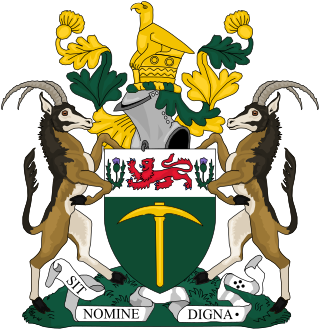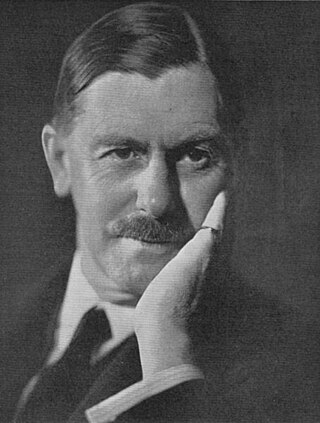 |
|---|
Advisory Council elections were held in Northern Rhodesia in April 1920. [1]
 |
|---|
Advisory Council elections were held in Northern Rhodesia in April 1920. [1]
Northern Rhodesia was split into two constituencies, North-Western Rhodesia (four seats) and North-Eastern Rhodesia (one seat). Voting was restricted to British subjects over the age of 21 who had lived in the territory for at least six months and owned at least £150 of property. [2]
| Seat | Elected members | |
|---|---|---|
| North-Eastern Rhodesia | J.L. Bruce | |
| North-Western Rhodesia | W.M. Alexander | |
| Frederick Clarke | ||
| Leopold Moore | ||
| D.E.C.R. Stirke | ||
| Source: Northern Rhodesia Journal | ||

Northern Rhodesia was a British protectorate in Southern Africa, now the independent country of Zambia. It was formed in 1911 by amalgamating the two earlier protectorates of Barotziland-North-Western Rhodesia and North-Eastern Rhodesia. It was initially administered, as were the two earlier protectorates, by the British South Africa Company (BSAC), a chartered company, on behalf of the British Government. From 1924, it was administered by the British Government as a protectorate, under similar conditions to other British-administered protectorates, and the special provisions required when it was administered by BSAC were terminated.

Southern Rhodesia was a landlocked, self-governing British Crown colony in Southern Africa, established in 1923 and consisting of British South Africa Company (BSAC) territories lying south of the Zambezi River. The region was informally known as South Zambesia until annexation by Britain, at the behest of Cecil Rhodes's British South Africa Company. The bounding territories were Bechuanaland (Botswana), Northern Rhodesia (Zambia), Portuguese Mozambique (Mozambique) and the Transvaal Republic.

The British South Africa Company was chartered in 1889 following the amalgamation of Cecil Rhodes' Central Search Association and the London-based Exploring Company Ltd, which had originally competed to capitalize on the expected mineral wealth of Mashonaland but united because of common economic interests and to secure British government backing. The company received a Royal Charter modelled on that of the British East India Company. Its first directors included The 2nd Duke of Abercorn, Rhodes himself, and the South African financier Alfred Beit. Rhodes hoped BSAC would promote colonisation and economic exploitation across much of south-central Africa, as part of the "Scramble for Africa". However, his main focus was south of the Zambezi, in Mashonaland and the coastal areas to its east, from which he believed the Portuguese could be removed by payment or force, and in the Transvaal, which he hoped would return to British control.

The United Federal Party (UFP) was a political party in the Federation of Rhodesia and Nyasaland.

Rhodesia, known initially as Zambesia, is a historical region in southern Africa whose formal boundaries evolved between the 1890s and 1980. Demarcated and named by the British South Africa Company (BSAC), which governed it until the 1920s, it thereafter saw administration by various authorities. It was bisected by a natural border, the Zambezi. The territory to the north of the Zambezi was officially designated Northern Rhodesia by the company, and has been Zambia since 1964; that to the south, which the company dubbed Southern Rhodesia, became Zimbabwe in 1980. Northern and Southern Rhodesia were sometimes informally called "the Rhodesias".

Elections in Zambia take place within the framework of a multi-party democracy and a presidential system. The President and National Assembly are simultaneously elected for five-year terms.
The Northern Rhodesia Congress was a political party in Zambia.

Michael Gelfand, CBE, was a Zimbabwean medical practitioner of tropical medicine, who received a Papal Order of the Knighthood of St. Sylvester.

General elections were held in Northern Rhodesia on 20 and 21 January 1964. There were two voter rolls for the Legislative Council, a main roll that elected 65 seats, and a reserved roll that elected 10. Africans elected the main roll, whilst Europeans elected the reserve roll. Other ethnicities were allowed to choose which roll to be part of. The United National Independence Party won the elections, taking 55 of the common roll seats. Its leader, Kenneth Kaunda became Prime Minister, leading the country to independence in October that year, at which point he became President. Voter turnout was 94.8% for the main roll and 74.1% for the reserved roll.

General elections were held in Northern Rhodesia on 30 October 1962, with by-elections for several seats held on 10 December. Although the United Federal Party won the most seats in the Legislative Council, and Northern Rhodesian African National Congress leader Harry Nkumbula had made a secret electoral pact with the UFP, Nkumbula decided to form a government with the United National Independence Party.

General elections were held in Northern Rhodesia on 20 March 1959, although voting did not take place in two constituencies until 9 April. The United Federal Party (UFP) was expected to win the elections, and did so by taking 13 of the 22 elected seats on the Legislative Council.

Godfrey Martin Huggins, 1st Viscount Malvern, was a Rhodesian politician and physician. He served as the fourth Prime Minister of Southern Rhodesia from 1933 to 1953 and remained in office as the first prime minister of the Federation of Rhodesia and Nyasaland until October 1956, becoming the longest serving prime minister in British Commonwealth history, until 1961.

General elections were held in Northern Rhodesia on 29 August 1941. All five Labour Party candidates won their seats.

The Northern Rhodesian Labour Party was a political party in Northern Rhodesia.

The Central Africa Party was a multi-racial political party in the Federation of Rhodesia and Nyasaland. The party organised separately in the three constituent part of the federation, Northern Rhodesia, Nyasaland and Southern Rhodesia.

A referendum on amalgamation with Southern Rhodesia was held in Northern Rhodesia in February 1922 alongside Advisory Council elections. The proposal was rejected by 82% of voters, who were generally in favour of the territory becoming a Crown colony with a Legislative Council.

Advisory Council elections were held in Northern Rhodesia in February 1922. Candidates opposed to amalgamation with Southern Rhodesia received 1,117 votes, whilst candidates supportive of the proposal received 310.

Advisory Council elections were held in Northern Rhodesia for the first time in July 1918.
The Dominion Party was a political party in the Federation of Rhodesia and Nyasaland, led by Winston Field.
Jacob Hendrik Smit, CMG was a Southern Rhodesian merchant and politician. Born in the Netherlands, Smit migrated to Rhodesia and traded as a merchant, before becoming Southern Rhodesia's Minister of Finance in 1933. Orthodox in his economic policies, Smit resigned from Godfrey Huggins' government in 1942 and later formed the right-wing Liberal Party. He was Southern Rhodesia's Leader of the Opposition from 1946 to 1948, when he lost his seat.